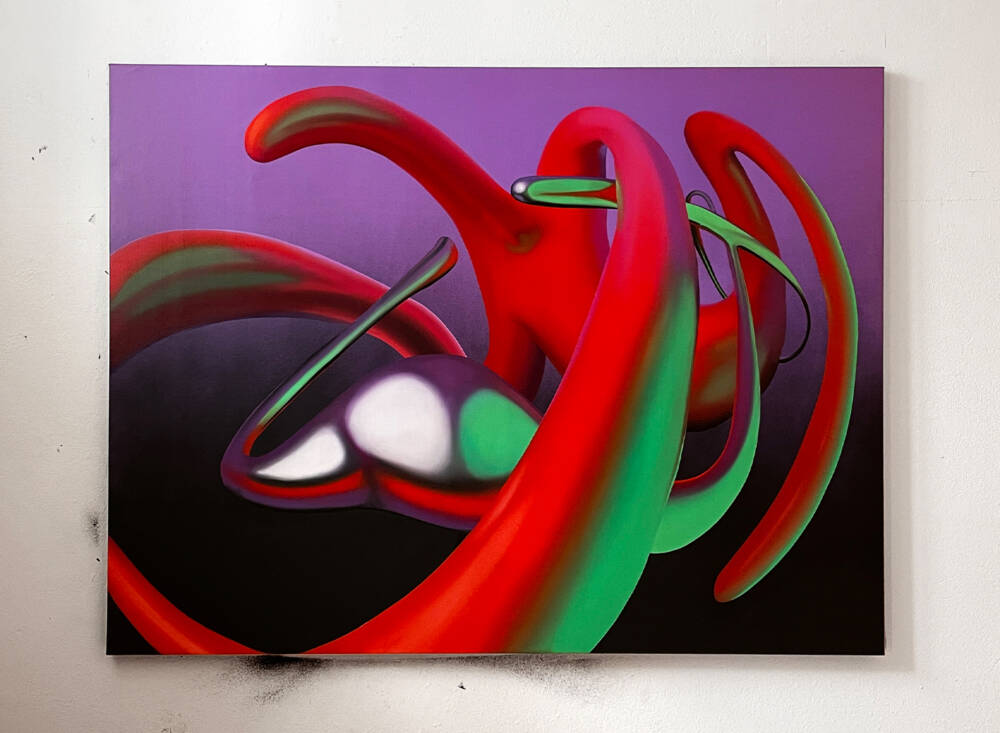When a canvas suddenly becomes a digital animation. In conversation with Ju Schnee
From the abstract painting to the manifested sculpture with augmented reality and back to the digital world. Interdisciplinary artist from Austria Ju Schnee is thrilled when the boundaries blur. Her alien-formed, near-breathless sculptures can have a tactile therapeutic effect, while her Augmented Reality works enable new perspectives and create an interplay of analog and digital. Ju is always reinventing herself and continues to experiment with her visual language. We talked about creating the cornerstones of art while being out of pocket, using artificial intelligence as an idea generator, and what it means to create in a constantly changing world.
Ju Schnee will speak at the Forward Festival Berlin in September. Next to her, you will be able to hear Creatives like Alice Isaac, Fons Hickmann, Anna Ginsburg and many more.
You studied Information Design (BA) and Communication Design (MA) in Graz. Tell us more about your background and how your work was changing over time.
During my master’s studies, I started working as a freelance graphic designer. After graduating in 2016, I moved to Berlin where I started working as an illustrator. That was already closer to my passion for painting. After working in this field for a few years and building a network, I actually started making art and created my first paintings and sculptures.
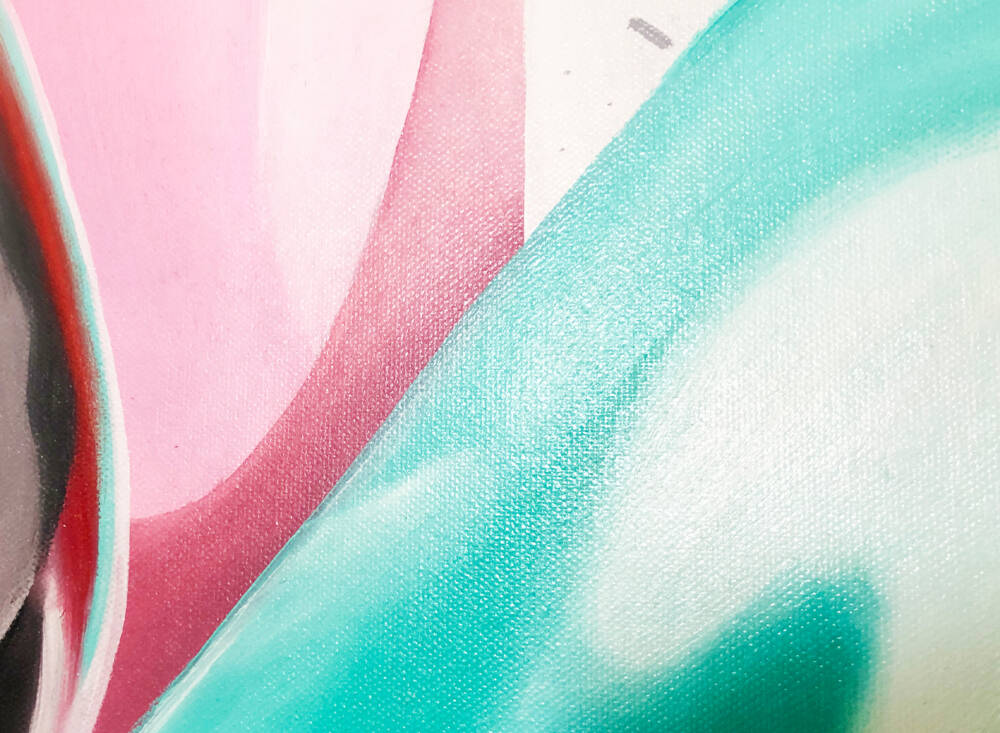
Were there any projects or encounters which kick-started your artistic career?
What helped me in Berlin was building a network of creative people. Especially the connection with Eyecandy Artists encouraged and pushed me a lot. They have been supporting me ever since. What also helped me creatively – as bad as it was at the time – was a dry spell of jobs. I suddenly had no jobs for several months and used the time to learn new things. It was during this phase that I looked into augmented reality. And even though I wasn’t making any money at the time and was living at a subsistence level, I was unconsciously creating the cornerstones of my art.
How do your personality traits reflect in your oil paintings?
I always start in digital space and build my animation before I sit down at the canvas. After that, I try to put a timeframe on the canvas, and new, unplanned things emerge again during this phase. I bring these changes back to the digital world and adjust my animation. As a result, it’s an interplay of analog and digital, and both worlds influence each other.

What is your workflow like while working with AR?
The classic work for me is to link my analog canvas with digital animation. That takes place in a very two-dimensional way, where the canvas is replaced with a video. This happens through markers that delineate the field of the canvas and the video is embedded at that exact spot. Currently, I’m using the app Artivive for this, but am in the process of writing my own app.
When working on your personal projects do you have a goal in mind or does that come with the process?
I usually have a few intermediate goals – like participating in a major exhibition or art fairs. But in terms of aesthetics, I like to be driven and inspired. I always try to reinvent myself so as not to become an endless copy of myself. This journey is exciting and exhilarating and probably why I love the job so much – to be able to reinvent myself again and again. It never gets boring.
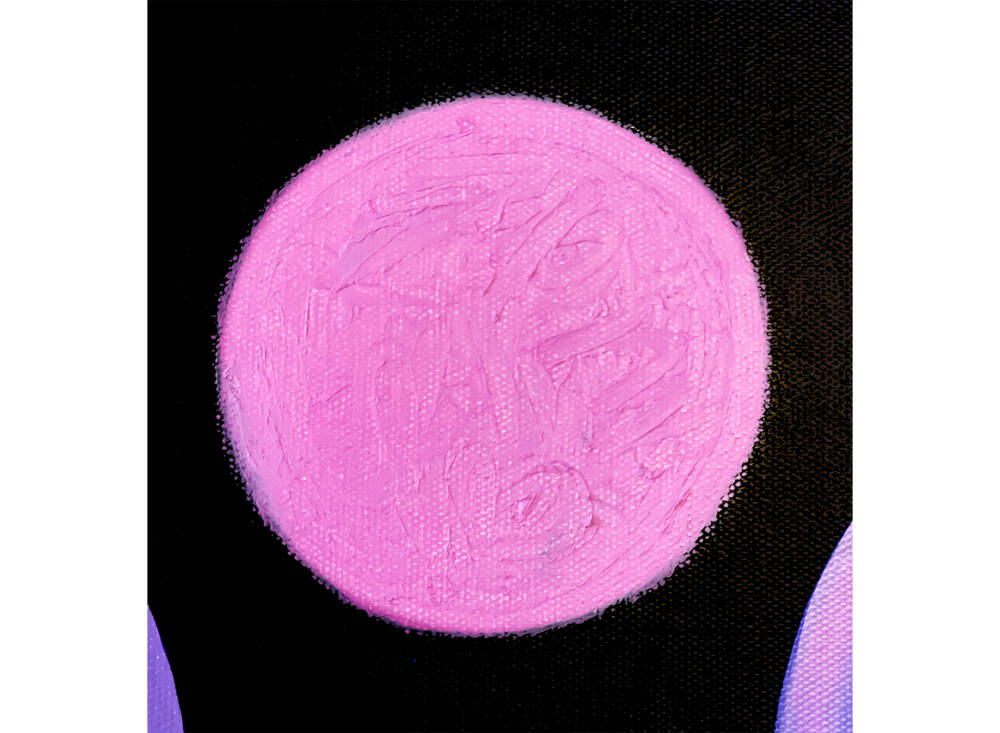
You have developed several unique visual styles that define your creativity over the years. What range of analog and digital tools contributes to revealing your visual language?
I use various computer programs, such as Adobe Creative Suite with Illustrator, Photoshop, After Effects, Premiere Pro, or more recently Aero. The 3D worlds I build in Cinema4D and use the render Vray. Sometimes I also draw in Procreate on the iPad pro. In combination with that, I still use analog tools like brushes and paint on canvas. Various solvents, drying accelerators, glosses, pigments, spray paint, airbrush, pastels, paper and pen.
You create ARs from your paintings skillfully transforming them into a digital realm. Is there anything behind this metamorphosis?
I think there’s a lot more to tell than just a dead, frozen two-dimensional moment on a canvas. This moment can also be magical, but I find it even more magical when the image suddenly opens up and reveals its story. Nowadays, nothing is just one-sided. You can connect everything, and link it. Take new paths and think about things in a new way. So why not combine an ancient technique like oil painting with modern technology? I find the approach very exciting.
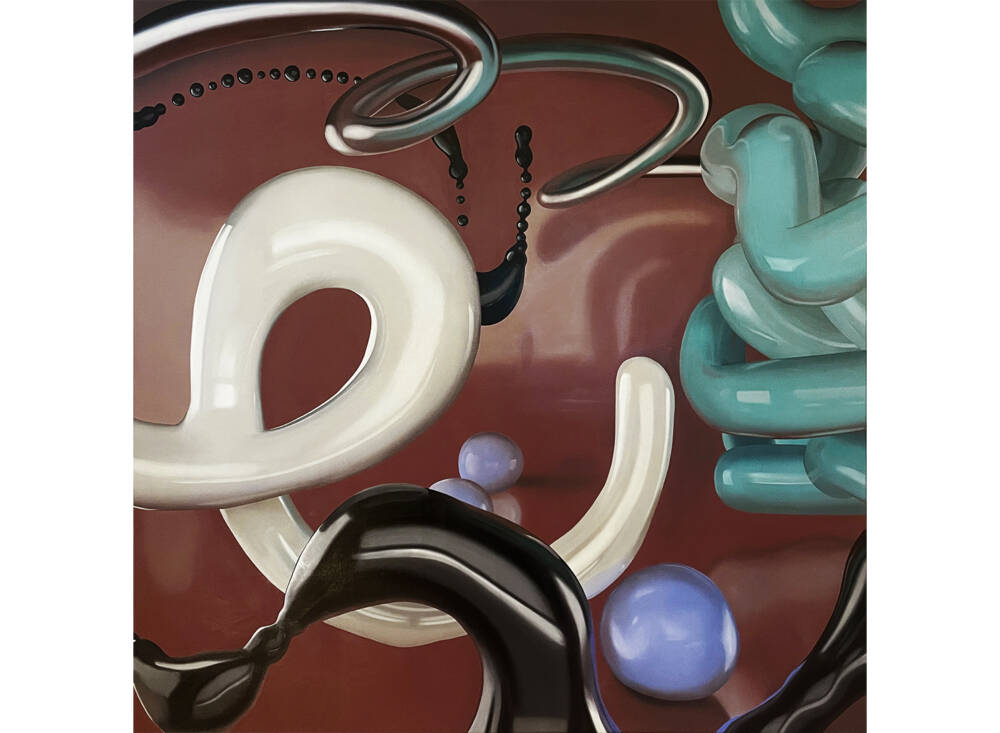
Tell us about a project you really had fun in the making and that still brings your excitement back whenever it comes to mind.
I love my painting Exhale in combination with AR and the two sculptures INHALE and HOLD. It is a Gesamtkunstwerk consisting of these components. The main central work is the painting which shows many small abstract forms. The AR animation reveals the movement of the painting, causing the abstract shapes to fall down and appear to fall out of the painting. To the left and right of the painting, we had placed each a sculpture that look like the shape already seen in the painting. It was a beautiful overall performance that was and still is very important to my continued journey.

Do you keep an eye on breakthroughs in the art industry? Is there anyone, in particular, you can think of?
So much is happening at the moment, and nothing at the same time. NFTs, digital art, AR, young artists, career changers and celebrities suddenly become artists. Art is becoming more and more complex, but sometimes it still feels like nothing is changing due to very old galleries that don’t really want to change. The young pioneers are often ignored for years. You either need a lot of staying power in the art world or simply a very very good network.
Nevertheless, I try to go my way and not adapt. To continue to experiment and consolidate my visual language. Who I find very exciting at the moment is Beate Carlsson. She is actually an art director, but she founded the label AVAVAV and fuses fashion with art. She’s not only a smart businesswoman but also a master of visual language. Pure inspiration for me right now. But that’s exactly what I find so exciting at the moment. When you don’t just think in terms of “canvas” or “sculpture” or “fashion,” but when you mix all these fields together. A digital sculpture as NFT suddenly becomes a physical sculpture IRL. A canvas suddenly becomes a digital animation through AR. I find it exciting when the boundaries blur.

You surf from abstract painting to augmented reality or sculpture and then return to the digital world. How has technology opened up new opportunities for art-making?
I think it’s exciting to bring in artificial intelligence to generate ideas. Our minds are only creative and capable of finding ideas to a certain point. An AI can help you create new scenes you never thought would be possible. Using this technology and allowing yourself to be controlled by a computer is an exciting approach. You give up control and let yourself fall. In the end, it’s a symbiosis of the human mind and the virtual world of artificial intelligence.
Is there a mission pushing you further? Which are the issues you prefer to address within your works?
There is no main theme that drives me, but I am definitely influenced by our environment. I find it fascinating how we live or survive in today’s world and yet live in an abundance of materialities. This absurd mix of luxuries and belongings coupled with the disasters like climate change, poverty and war. An absurd mixture of extreme worlds that collide. Nevertheless, at the center of my work is always the return to one’s own center and psyche and finding oneself in a loud and fast world.
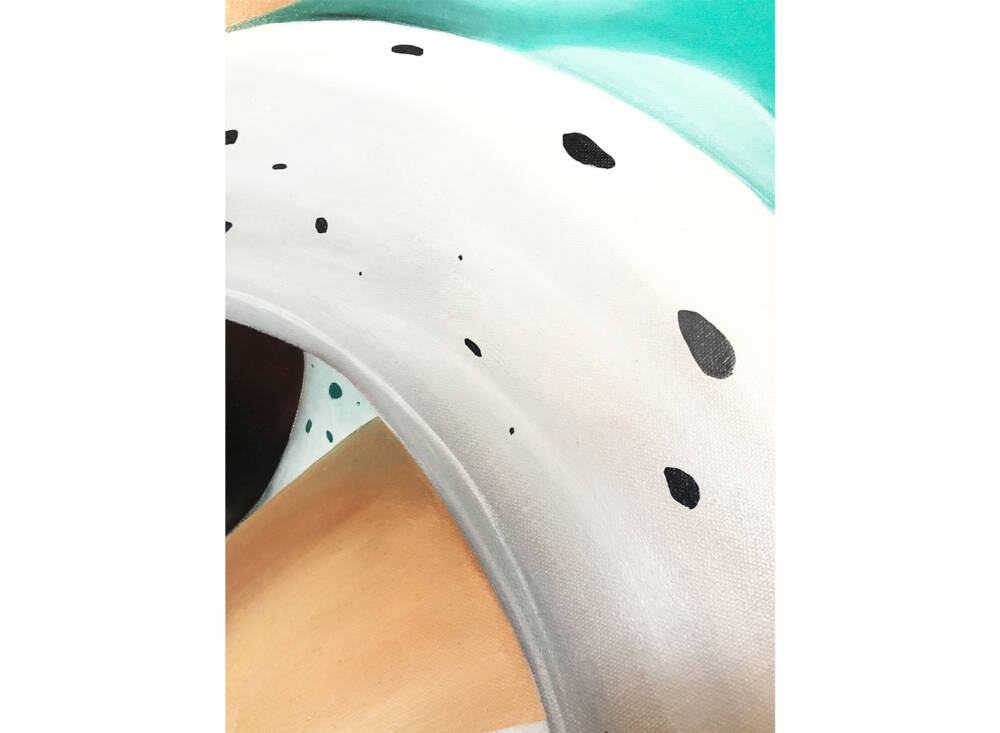
What do you fancy the most about Berlin’s digital art scene and what should be improved?
I would be happy if more women could get visibility and show their digital art. This field is still very male-dominated. What I like about the Berlin art scene, though, is the ultra-contemporary approach. It’s bold and sometimes absurd, but that’s what I love. There’s a touch of underground and techno about it. Berlin, that’s what it is.
How do you see the future of digital art? And what are the next steps of your career?
I’m very excited about where the journey with NFTs is going. I see blockchain technology as a very interesting and valuable new contribution to the art world. Whether it will remain the classic NFTs, or whether the technology will be rethought – that remains to be seen. But I find it exciting that the fields are mixing more and more. AR is right up there and will absolutely be an important element in many artworks in the coming years.
My journey is very open. I just try to go with the flow and keep myself and my mind open. I’m nowhere near my goal (if there even is one), but I feel very inspired and motivated at the moment. I will keep mixing the fields and who knows what will come out in the end.
